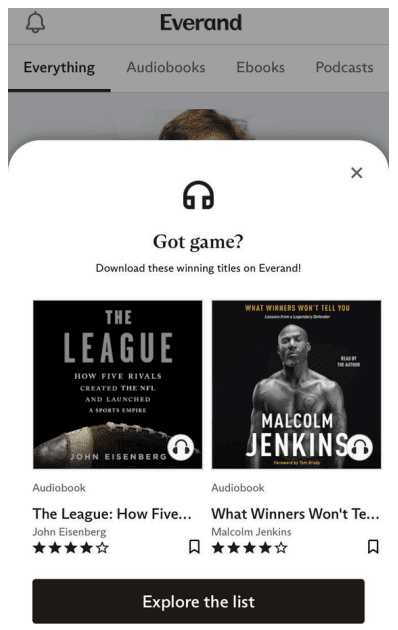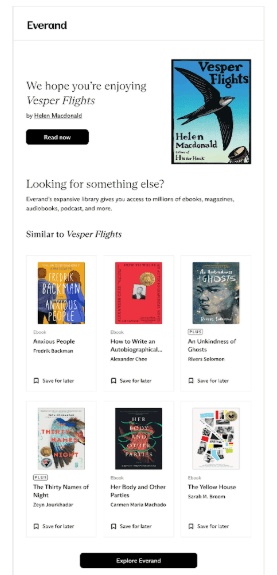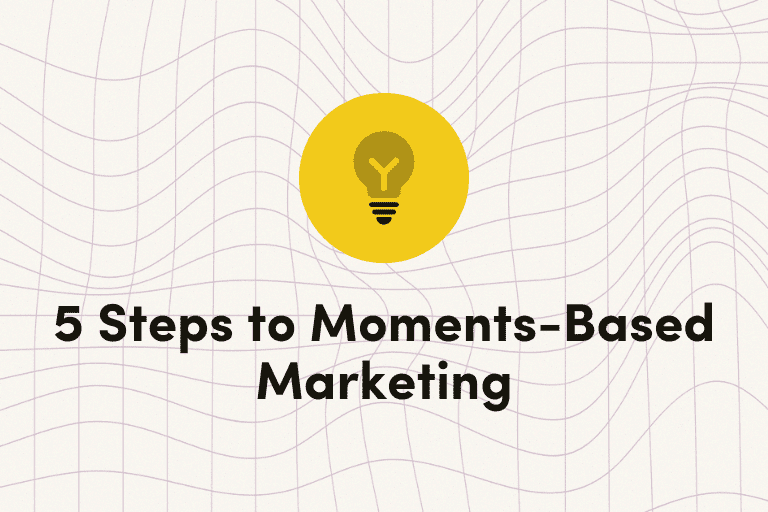Modern marketing teams have more data, dashboards, and automation tools than ever before. Yet for many brands, all that capability hasn’t translated into a better customer experience. Audiences still receive scattered, impersonal messages that reflect a company’s internal silos more than its understanding of the customer.
Scribd, Inc. the San Francisco–based digital reading subscription behind Everand and Fable, faced this same challenge. At its core, Scribd’s business depends on one thing: keeping people reading. But its teams were each chasing different goals—brand for traffic, growth for revenue, lifecycle for retention—creating a fragmented experience for readers.
That struggle, and the framework Scribd used to solve it, was the focus of their session at Activate New York 2025, From Disjointed to Dynamic: Making Your Marketing Work as One, featuring Scribd’s Director of Product, Aroash Solomon.
“The reason your marketing messages feel scattered isn’t a messaging problem. It’s an org chart problem.”
~ Aroash Solomon, Director of Product at Scribd
Scribd’s solution was deceptively simple. Instead of trying to constantly do more, the company aligned every team around one measurable customer behavior and saw gains in engagement and retention.
|
Curious how Scribd made “doing less” deliver more? Read the full Scribd case study to see how Iterable’s Smart Ingest and Embedded Messaging helped the team unify data, channels, and results. |
The Problem Isn’t Messaging, It’s Misalignment
Imagine getting five different messages from the same brand in a single week—none of which actually apply to you. One push notification promotes a new audiobook when you only read ebooks. Another email highlights “Sports Books You’ll Love,” even though you’ve never shown interest in sports. A third campaign nudges you toward self-help titles when you’re a dedicated romance reader.
That was the experience many Scribd users were having. Each team was chasing its own metric—brand for traffic, growth for revenue, product for feature adoption—resulting in a flood of disjointed messages that reflected Scribd’s org chart more than its customers’ needs.
This wasn’t just annoying for customers; it made them tune out. Engagement dropped, even as internal teams spent countless hours trying to produce better content. Scribd needed to separate signal from noise, realigning around what truly mattered to readers rather than what each team wanted to achieve.
Diagnosing the Noise: What’s Confusing Customers?
Once Scribd recognized that over-messaging was just a symptom, the real work began—diagnosing the noise. That meant asking uncomfortable but necessary questions:
- Why are teams chasing different goals?
- Where do those goals collide?
- Which leaders can’t get in a room and make a decision?
- Who’s pursuing metrics that don’t actually align with what customers want?
Those questions surfaced the root issue: misalignment wasn’t personal—it was structural. Each team was optimizing for what made sense in their own world, but together their efforts created chaos for the customer.
“We have to define shared goals, and we need to anchor that in the simple question of why customers come to us. What are they trying to do?”
~ Aroash Solomon, Director of Product at Scribd
That shift required rethinking how success was measured. Teams could no longer be rewarded for sending more campaigns or hitting channel-level KPIs. Instead, Scribd began aligning incentives around one shared behavior—the customer action that mattered most. The goal wasn’t to send fewer messages for efficiency’s sake, but to send fewer, better messages that moved customers toward a common outcome.
Scribd’s Turning Point: Defining the Highest-Value Action (HVA)
The key turning point for Scribd came when its data science team found the company’s single most predictive retention behavior: reading for at least 60 minutes per month. This became the team’s highest-value action (HVA).
| What is Highest-Value Action (HVA)? HVA is a single measurable customer behavior that most strongly predicts long-term engagement and retention. Building around it can turn scattered campaigns into more coordinated, impactful customer moments. |
Scribd’s HVA became a north star that united every department around a single goal. Each department then translated that goal through its own perception. For example:
- Branding reminded readers why they chose Scribd in the first place.
- Product marketing emphasized the tools that made it easier to read more.
- Editorial curated content tied to each user’s unique preferences.
- Growth refined subscription strategies to provide access to more content.
Once this was established, lifecycle marketing shifted from being reactive to proactive. Instead of telling teams what to do, the lifecycle team began asking, “How can we help our users move closer to reading for at least 60 minutes per month?” Suddenly, everyone was pulling in the same direction, and customers began to feel the difference.
What Doing Less Looks Like in Practice
When Scribd mapped out a week of user messages, the problem became painfully clear—too many touchpoints, and none of them connected.
Before
Messages were frequent, irrelevant, and disconnected from each other, resulting in a fragmented experience that reflected internal goals, not customer needs. Intrusive in-app prompts promoted genres users had never explored. Email newsletters celebrated Audiobook Appreciation Month—even for ebook-only readers, and push notifications went to everyone, regardless of behavior or interest, with little to no personalization.








After
Once every team aligned around a single customer outcome—encouraging readers to hit 60 minutes of reading per month—messaging transformed. Now, an email follows up on a book a user had started, asking if they wanted to keep reading, and a push notification highlights a soon-to-be-released title in a genre the reader already loved and 75% of Scribd’s audience already reads.




Solomon says this was like replacing five irrelevant touchpoints with two highly relevant ones.
“This process doesn’t represent four or five different teams sending messages. It represents all of those teams getting in a room and asking, ‘What’s the most important thing we can say today?’”
~ Aroash Solomon, Director of Product at Scribd
The Results: Alignment, Efficiency, and Engagement
Scribd’s shift to shared goals delivered impact on every level—organizational, operational, and customer-facing. Once teams aligned around a single outcome, efficiency and engagement began to rise together.
- Message volume dropped, but open and click-through rates climbed to 89%
- Readers spent more time in the product (35 more seconds per session)
- Premium plan adoption rose in targeted segments vs. holdout groups
- Creative cycles shortened, as teams stopped duplicating work and focused on shared priorities.
The cultural impact was just as significant. By democratizing access to customer insights—user interviews, app reviews, and feedback stored in a shared hub—Scribd made data visible to everyone. Teams no longer competed for credit; they collaborated toward the same result.
As Aroash Solomon put it, “You don’t have to fix an entire org chart to make progress. Just start by asking better questions in meetings.”
How Scribd Operationalized Alignment
Cultural alignment only works when it’s backed by systems and structure. Scribd turned its “do less, align more” philosophy into day-to-day practice through a few key operational shifts:
- Replaced silos with cross-functional pods. Teams were reorganized around shared outcomes instead of individual channels, bringing together marketers, product owners, and analysts to collaborate toward the same customer goal.
- Implemented ROI-based time tracking. Every initiative was evaluated against its business impact—discouraging low-value work and helping teams focus on what truly moved the needle.
- Activated data faster with Smart Ingest. Iterable’s Smart Ingest gave Scribd a cleaner, more agile way to unify data across systems, making it easier for teams to access the same insights and act on them in real time.
- Delivered connected experiences through Embedded Messaging. By integrating messaging directly into the app, Scribd ensured that every touchpoint—email, push, or in-app—worked together to guide readers toward a single outcome.
Iterable wasn’t the hero of Scribd’s story. But it was the infrastructure that made the alignment changes operationally possible for the company at scale.
Why Simplicity and Transparency Win Every Time
Scribd’s story shows that simplicity isn’t about doing less—it’s about doing what matters most. By being transparent about goals, aligning teams around a single customer outcome, and breaking down the divisions that create noise, Scribd built a marketing engine that feels more connected for both teams and customers.
When everyone has access to the same data and direction, clarity replaces chaos. That’s what Iterable makes possible—helping brands activate data faster, communicate across channels more cohesively, and stay focused on the customer moments that matter.
Scribd proved that alignment isn’t just good for teams—it’s good for growth. Watch the full session on demand or see the full Scribd case study to learn how Iterable helped turn shared goals into measurable customer impact.
































